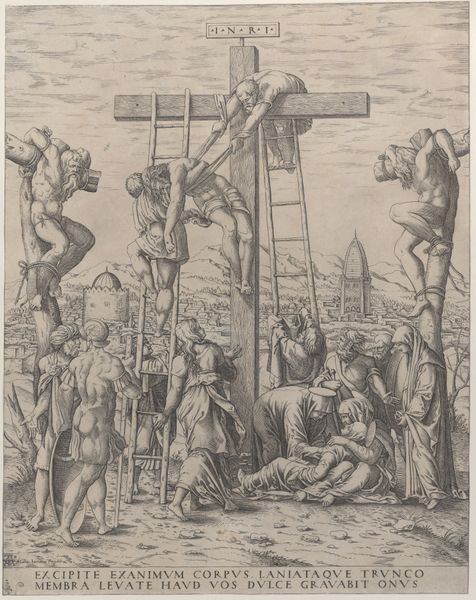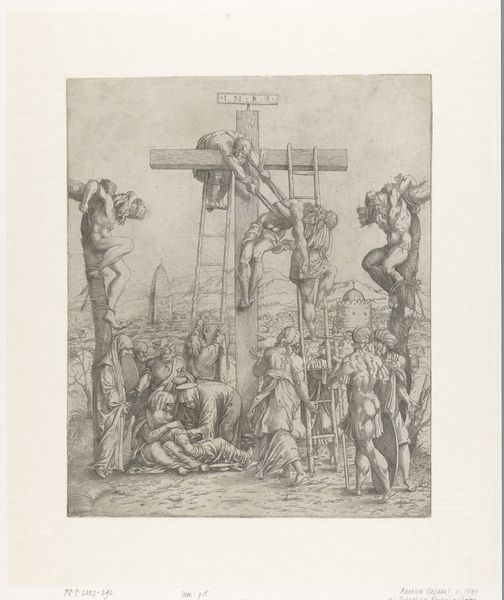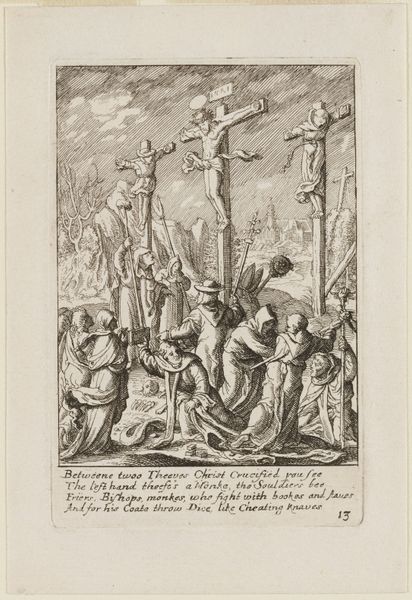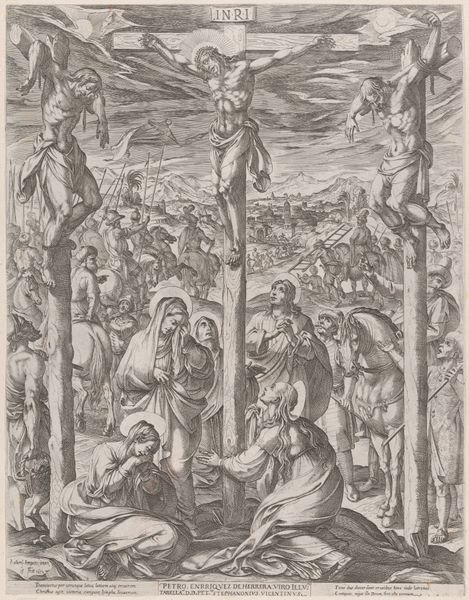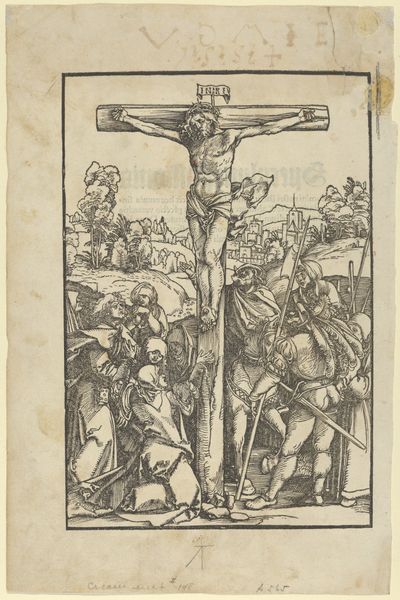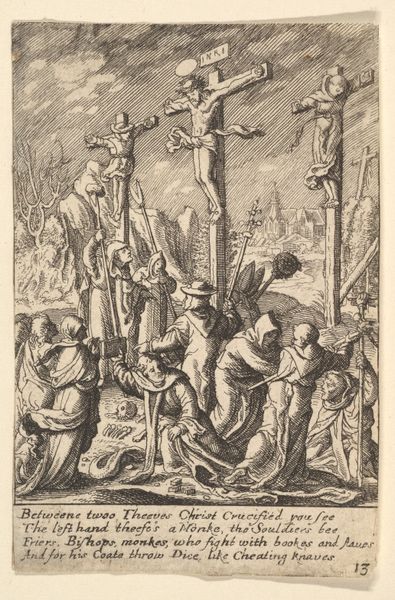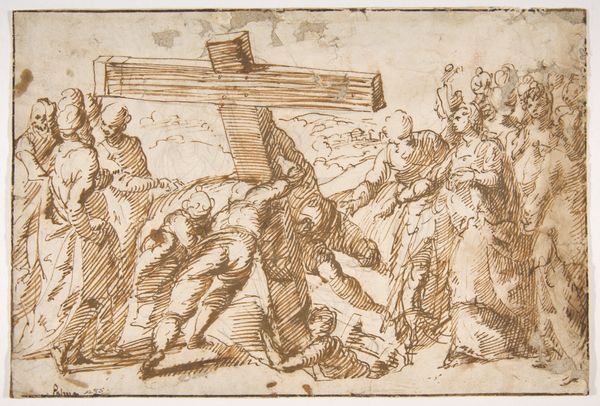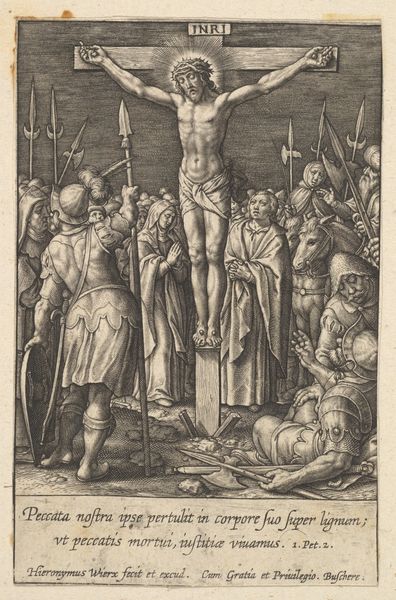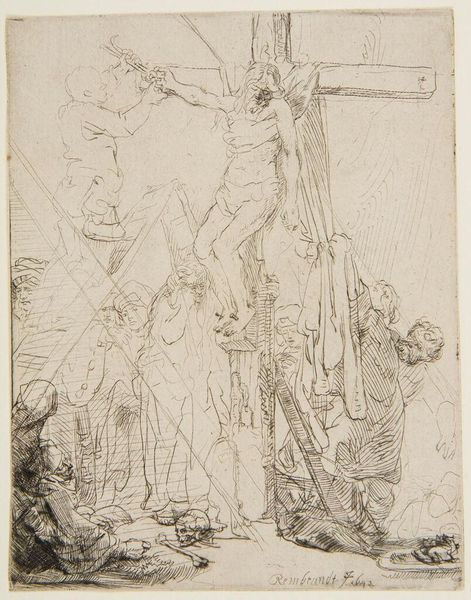
print, intaglio, engraving
#
narrative-art
# print
#
intaglio
#
figuration
#
11_renaissance
#
history-painting
#
northern-renaissance
#
engraving
Dimensions: height 387 mm, width 319 mm
Copyright: Rijks Museum: Open Domain
Editor: This is a print entitled *Kruisafname*, or *Descent from the Cross*, made after 1570 by an anonymous artist using engraving and intaglio techniques. The scene is, well, intense. There's so much activity, emotion, and such careful detail rendered in a monochrome palette. What social narratives are embedded in a piece like this? Curator: This piece acts as a window into the social fabric of its time. Think about it: the depiction of Christ's removal from the cross wasn't just a retelling of a biblical story. It was a potent symbol, ripe with political implications regarding sacrifice, power, and ultimately, resistance against oppression. How do you see the figures surrounding Christ – Mary, the disciples, the onlookers – relating to that power dynamic? Editor: I notice that the figures at the base of the cross, particularly the women, seem overwhelmed by grief and seem physically weaker, while others seem to take action by pulling him off of the cross and holding up his limp body. Does this work portray men and women within certain patriarchal roles? Curator: Exactly! Gender plays a critical role here. Consider the vulnerability and mourning embodied by Mary, against the physical exertion of the men actively taking Christ down. These depictions, however unintentional, solidified gendered expectations prevalent in society. How do those visual cues, intended to inspire piety, also reinforce social hierarchies? Editor: That's a compelling, and complicated, point. It shows how artistic choices, even within a religious context, can be inherently political. Even religious imagery can bolster existing cultural narratives. I initially focused on the technical skill, but seeing it in this light changes everything. Curator: Precisely. By analyzing these visual strategies, we can unravel not just the religious sentiment of the time, but also the implicit biases shaping social interactions and power structures.
Comments
No comments
Be the first to comment and join the conversation on the ultimate creative platform.
